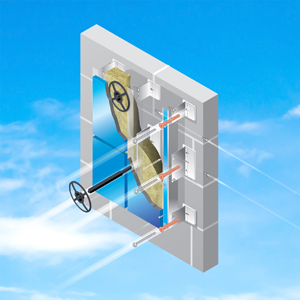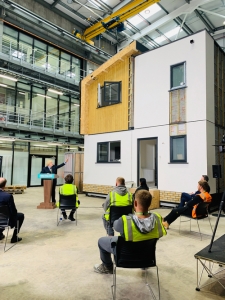60% of construction projects are not completed on time
#constructionindustry #sustainable #architects #localauthorities #contractors #developers #innovation #buildingtechnology #mmc #modular #housing #doors&windows @EuromaxOfficial
According to the Department for Business, Innovation and Skills (BIS), 60 per cent of construction projects are not completed on time. Modular builds can provide faster project completion, but what are the risks and benefits of this growing construction method? Here, Nick Cowley, managing director of window and door supplier to the offsite construction industry, Euramax, explains.
Reports suggest that modular construction can deliver projects 50 per cent faster than traditional construction while maintaining the same high quality. No surprises then, that the technique is considered the next mega trend in construction.
This enhanced completion time of modular construction has become vital for building classrooms, hospital wards and other facilities that requires immediate construction. In 2019, Europe’s tallest modular building, a block of housing apartments in Croydon, South London, was completed in just 35 weeks.
Controlled environment
Modular construction refers to building projects in which 60 to 90 per cent of a build is constructed offsite. Typically, inside a factory environment.
Constructing the build elsewhere means work can start simultaneously alongside preparation of the site. Assembling modules in a factory also means there is greater quality control — unlike a site environment, faults can be resolved before the modules are fixed to the larger construction. This saves remanufacturing time and produces a more accurate build.
Manufacturing in a controlled environment also means external factors, such as weather conditions, cannot interrupt the development. As site managers in Britain will attest to, nothing presses pause on a construction project like an unexpected downpour. For time-sensitive projects, minimising this risk is essential.
Securing trustworthy relationships
While modular construction is praised for its speed, these builds require extreme technical intricacy. Measurements must be exact to ensure modules can fix together seamlessly. A measurement slightly under or over the figures specified could mean the build is flawed, slowing down project completion. Suddenly, this speedy construction option isn’t so quick.
Establishing relationships with trusted suppliers and contractors is vital to ensure project predictability. There are many unreliable and dishonest professionals that will exploit construction’s need for quick project delivery, often leaving projects in the lurch — meaning work must be extended, or even abandoned.
Working with reliable companies for assistance on modular build projects can help to ensure that deadlines are met — and the same applies to features that are installed in the modules, such as windows and doors.
Euramax has 70 years of manufacturing experience of windows and doors for modular construction projects. In fact, Euramax is supplying its windows and doors to modular home manufacturer, Ilke Homes, for the production of 2,000 of its modular homes, demonstrating Euramax’s reliability for the modular build sector.
No matter how big or small a project — from hospitals to housing — extended completion times can cause problems. However, modular construction can ensure deadlines are met. With the BIS reporting 60 per cent of construction projects are not completed on time, modular construction methods could be increasingly looked upon to change this.
While it’s not possible to predict that a project will run smoothly, choosing reputable suppliers for modular construction projects can reduce delays, ensuring efficient completion and minimise the risk of any construction hiccups.
Euramax manufactures high quality windows and doors for modular buildings, here in the UK. More information on the company’s specialist expertise in this area can be found online.



 variety of scope from the projects shows Totally Modulars commitment to the whole MMC journey, as the projects show a combination of accelerated housing delivery, digital planning and production technologies that will enable the industry to attain new levels of quality, variability, and efficiency.
variety of scope from the projects shows Totally Modulars commitment to the whole MMC journey, as the projects show a combination of accelerated housing delivery, digital planning and production technologies that will enable the industry to attain new levels of quality, variability, and efficiency.
